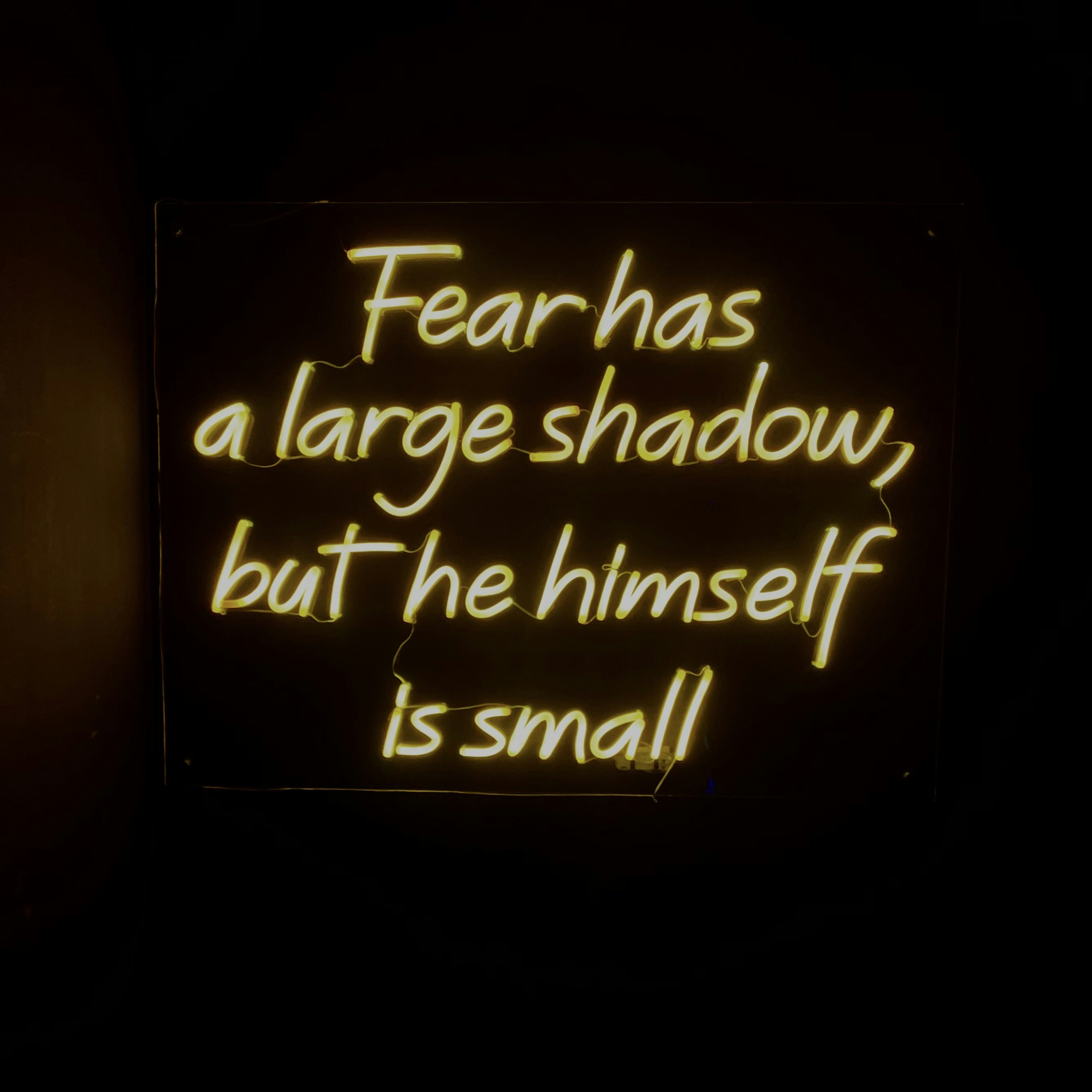We fear failure more than real danger because ancestral survival hinged on social acceptance, so modern status threats hijack the same threat circuits built for predators and cliffs; treat this as a nervous‑system pattern you can reset, not a character flaw. With a few fast routines and tiny exposure steps, the system relearns that small, honest actions—not avoidance—restore calm, focus, and confidence; see How Stress Hijacks Your Brain at https://mindorigins.com/stress-hijack.
Why failure feels worse than danger
For most of human history, exclusion from the group meant fewer resources and protection, so the brain tags status risk as survival‑relevant and pushes fight, flight, or freeze even when bodies are safe in a meeting room. That’s why a hard email, public feedback, or a stalled project can spike anxiety, shrink attention, and trigger depression‑like dips despite no physical threat.
Modern amplifiers of fear
Metrics, always‑on feeds, and ambiguous expectations make status uncertain, training dopamine to chase instant safety signals (likes, replies, quick fixes) while real goals require slower payoffs. Without intentional resets, this tilt becomes overdrive—more effort, less clarity, and recurring social problems that drain motivation.
3‑step Failure‑Anxiety Reset (2–5 minutes)
Regulate: 6 slow nasal exhales, relax jaw/shoulders, soften gaze; stand and stretch to widen attention and downshift arousal.
Reframe: name the friction—uncertainty, reputation risk, perfectionism—then define one 2–5 minute starter (draft 3 bullets, ask one clarifying question, ship a rough first pass).
Reward: checkmark, one slow breath, brief walk—so action, not avoidance, earns relief and retrains the system; for skills that make calm stick, visit Rewiring Your Brain for Calm and Focus at https://mindorigins.com/rewiring-brain.
Micro‑exposures that shrink fear of failure
Build a “failure ladder”: 5 tiny reps from least to most uncomfortable (e.g., share a rough idea with a peer, then with your team, then in a short demo).
Pre‑commit one honest outcome you can tolerate (a typo in an internal draft, a question you can’t answer) and practice recovery scripts.
Log three fast recoveries this week to show your brain outcomes are safe and reversible.
Social intelligence beats mind‑reading
Use “listen, label, lead”: listen for the concern beneath the stance, label it plainly (“timeline risk,” “role unclear”), then lead with one testable next step (define “done,” assign an owner, time‑box a prototype). This lowers interpersonal friction that keeps fear loops alive; for evolutionary context on worry signals, see https://mindorigins.com/anxiety-evolution/.
Design choices that prevent spirals
Decision hygiene: define “done,” owner, and next check‑in before starting; fewer loops mean less status anxiety.
Focus windows: 15–25 minute sprints with a visible output (one page, five problems, one outreach) to block perfectionism.
Tech boundaries: batch notifications, use night modes after sunset, and charge devices outside the bedroom to protect sleep and next‑day focus.
Self‑talk that supports action
Shift from global threats to specific skills: “If I fail, I’ll learn one thing—my next 3‑minute step is X.” Pair each scary action with immediate, small reward to reinforce progress over perfection.
When to add support
If fear consistently disrupts sleep, work, or relationships, pair daily resets with brief skills‑based help (cognitive reframes, graded exposure, social skills practice). Short, structured support accelerates relief and makes gains durable.
Outcome: courage through small, safe risks
By resetting arousal, shrinking the task, and rewarding quick, honest attempts, fear of failure becomes a series of winnable reps—reducing anxiety, easing depression‑like dips, preventing social problems, and restoring steady focus; learn how this approach scales across modern challenges at https://mindorigins.com/about-us.

Understanding Fear: The Root of Our Anxieties
Fear, as a fundamental emotional response, has evolved over millennia, serving as a vital survival mechanism for humans. In our prehistoric past, fears were predominantly linked to tangible threats such as predators or environmental hazards. These primal fears were crucial for survival, prompting immediate reactions designed to protect us from harm, such as the fight-or-flight response. As our ancestors navigated a perilous world, those who effectively managed their fear were more likely to survive and reproduce, ensuring the continuation of their genetic lineage.
However, in the context of modern society, the nature of fear has dramatically shifted. Instead of focusing primarily on physical dangers, much of our anxiety now revolves around social and psychological concerns. Fears related to failure, rejection, and social disapproval have become pervasive, often eliciting an even stronger response in comparison to physical threats. This can be attributed to our evolutionary reliance on social groups for survival. In ancient times, being ostracized from one’s community could lead to isolation and a significantly diminished chance of survival. Consequently, the innate drive for social acceptance was honed over generations, grounding our contemporary fears and anxieties.
The emotional imprint of early human experiences continuously influences our present-day reactions. For instance, failures in social or professional contexts trigger similar fear responses to those associated with physical dangers. The anxiety stemming from potential failure feels like a threat to our inherent need for belonging and acceptance. This nuance highlights that modern anxieties are less about the physical outcomes of failure and more about the perceived impact on our social standing and self-worth. Understanding this transformation from primal fears to modern anxieties allows us to grasp the complexity of human emotion and the underlying reasons we may fear failure more than actual danger.
The Evolution of Social Structures: Failure and Acceptance
Human beings have always been inherently social creatures, forming intricate social structures that have evolved over millennia. These structures dictate not only personal relationships but also play a critical role in survival. Throughout history, being part of a cohesive group was essential for the sustenance and protection of individuals. Early humans relied heavily on cooperation and acceptance within their communities to hunt, gather, and fend off predators. Thus, social hierarchies emerged, and the dynamics of these hierarchies significantly influenced individual persistence and communal prosperity.
In evolutionary terms, failure within these social realms held severe consequences. An individual who failed to meet the expectations of their group risked exclusion, which could lead to isolation and, ultimately, danger. The absolute necessity of belonging to a group meant that social failures were often equated with dire outcomes, including starvation and vulnerability to threats. This ingrained fear of failure traces back to our ancestors’ experiences, where group cohesion was crucial for survival. As such, the implications of failure were perceived not merely as a personal setback but as a potential matter of life and death.
The need for acceptance and status within a social hierarchy continues to permeate modern life. While the risks may not be as life-threatening today, the primal instinct to seek validation persists, often manifesting as anxiety around social and professional setbacks. Nowadays, competition in various fields heightens these fears as individuals strive for recognition and belonging in an increasingly interconnected world. The specter of failure, rooted in our evolutionary past, still looms large, reminding us of the pivotal role social acceptance plays in our existential framework.
Modern Anxiety: Failure in the Context of Current Society
In contemporary society, the fear of failure has evolved into a pervasive source of anxiety that impacts various aspects of life, including careers, education, and personal relationships. As individuals navigate a complex world marked by high expectations, the consequences of perceived failure can feel magnified, leading to heightened stress levels. Research indicates that a significant portion of the population grapples with anxiety related to their performance and achievements. For instance, a survey conducted by the American Psychological Association revealed that nearly 60% of adults reported feeling anxious about their work performance, highlighting the profound impact that the fear of failure can have on one’s mental well-being.
This anxiety is further exacerbated by cultural pressures to succeed. Societal norms often emphasize success as a key indicator of worth, establishing an environment where failure is not just a setback but a source of shame. Educational systems contribute to this culture by fostering competitive atmospheres, where grades and accolades become the primary measures of success. Consequently, students can develop an overwhelming fear of failing, which results in anxiety that may hinder their ability to perform effectively.
The influence of social media on this fear cannot be understated. Platforms like Instagram and LinkedIn amplify feelings of inadequacy by showcasing curated portrayals of success that can distort reality. Users frequently compare themselves to these idealized images, often leading to feelings of regret and anxiety when they perceive their own lives as lacking in comparison. This incessant pressure to present a successful façade not only enhances the fear of failure but also encourages individuals to prioritize external validation over their intrinsic motivations.
Ultimately, the fear of failure ingrained in modern culture perpetuates an ongoing cycle of anxiety, prompting individuals to either strive for perfection or disengage entirely in efforts to avoid potential setbacks.
Overcoming the Fear of Failure: Strategies for a Healthier Mindset
Overcoming the fear of failure is essential in fostering a healthier mindset and enhancing personal growth. One effective approach is through cognitive-behavioral techniques, which can help individuals reframe their thoughts regarding failure. By recognizing and challenging negative thought patterns, individuals can develop a more constructive perspective on setbacks. For instance, instead of viewing a failed attempt as a definitive end, one can consider it an opportunity for learning and growth. This shift in perception can significantly reduce anxiety associated with failing and encourage a more proactive approach to challenges.
Incorporating mindfulness practices into daily routines can further empower individuals to manage their fears. Mindfulness encourages a non-judgmental awareness of one’s thoughts and emotions, allowing individuals to observe their fear of failure without becoming overwhelmed. Techniques such as meditation, deep breathing exercises, and mindful walking can enhance emotional regulation, making it easier to navigate anxiety when it arises. Regular engagement in these practices can cultivate resilience, enabling individuals to approach fears and challenges with a balanced mindset.
Building resilience is crucial in the journey to overcoming the fear of failure. Resilience entails the ability to bounce back from setbacks and adapt to adverse situations. Developing this quality involves setting achievable goals, practicing self-compassion, and seeking support from others when necessary. Engaging with a supportive community can provide encouragement and positive reinforcement, further mitigating feelings of inadequacy associated with failure. Research in psychology underscores the importance of resilience as a key factor that contributes to long-term success and emotional well-being.
Ultimately, embracing failure as a natural part of the learning process can liberate individuals from the constraints of anxiety. By implementing cognitive-behavioral techniques, mindfulness practices, and fostering resilience, individuals can develop a healthier mindset that views failure not as an endpoint, but as a stepping stone toward success.
